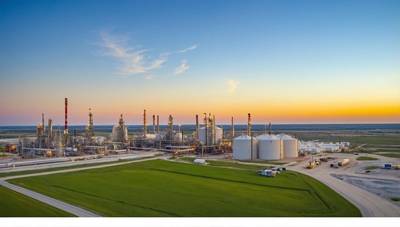Exxon expects a surge in natural gas demand by 2050
Exxon Mobil's annual outlook said that global demand for natural gases will increase by more than 20 percent from its level last year in 2050, as the gas replaces coal in powering industries and meeting higher electricity needs in developing countries.
These projections form the basis of the long-term investment and strategy for the largest U.S. oil company. Exxon's growth plans are ambitious compared to those of other oil companies around the world. The company aims to increase production by 18% in the next five year.
Exxon, in line with its previous forecast, predicts that global oil demand will plateau by 2030, but continue to exceed 100 million barrels a day until 2050.
The company stated that oil and natural gas will make up 55% of global energy in 25 years, down by 1 percentage point compared to 2024.
Chris Birdsall, Exxon’s director of economics, energy, and strategic planning, said at a recent press conference that the industrial sector would drive an increase in demand for natural gases as they replace coal.
He said that it was a good way to meet the needs of industrial (power), but also reduce the problems associated with coal's emissions.
Exxon predicts that even though overall crude oil demand will remain stable, the demand for gasoline in the long-term will decline by 25% due to electric vehicle proliferation, while demand will remain strong for commercial transport and aviation.
Birdsall stated that refineries will need to adapt over time to the changing composition.
Exxon says that more work needs to be done to achieve the United Nations' 2050 emission goal to limit global temperatures increases.
The company expects carbon dioxide emissions to fall to 27 billion tons by 2050. This is a 25% reduction from the current levels, but more than double what international bodies want to see.
Exxon says that the world's ability reduce carbon emissions depends on technology and solutions becoming more affordable. It calls for public policies to avoid energy price spikes, and supply restrictions.
(source: Reuters)




